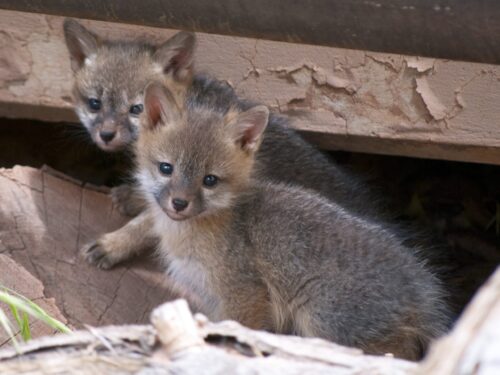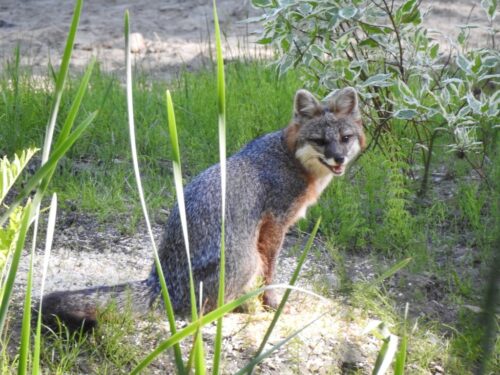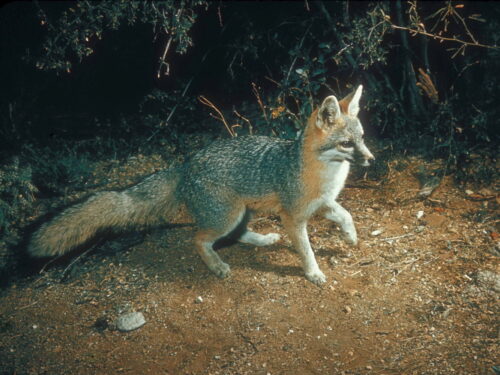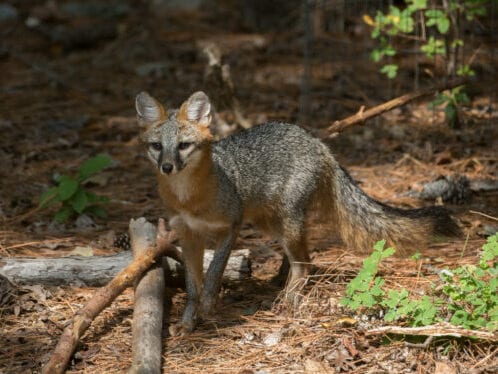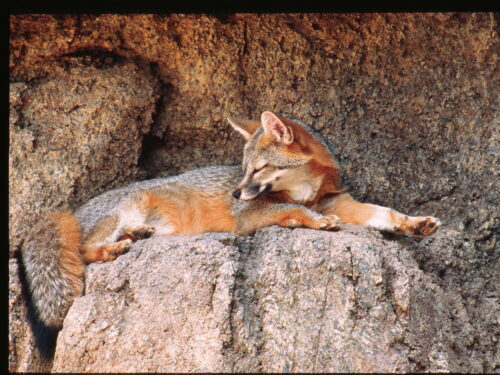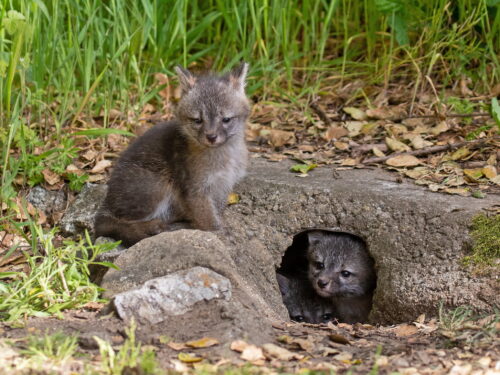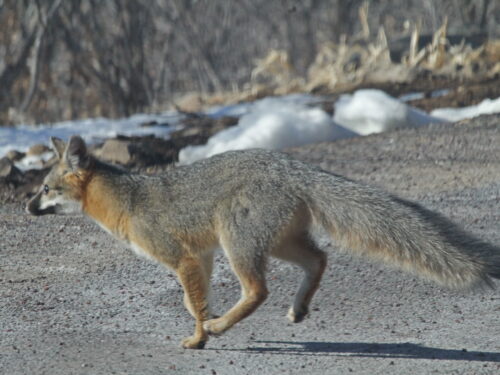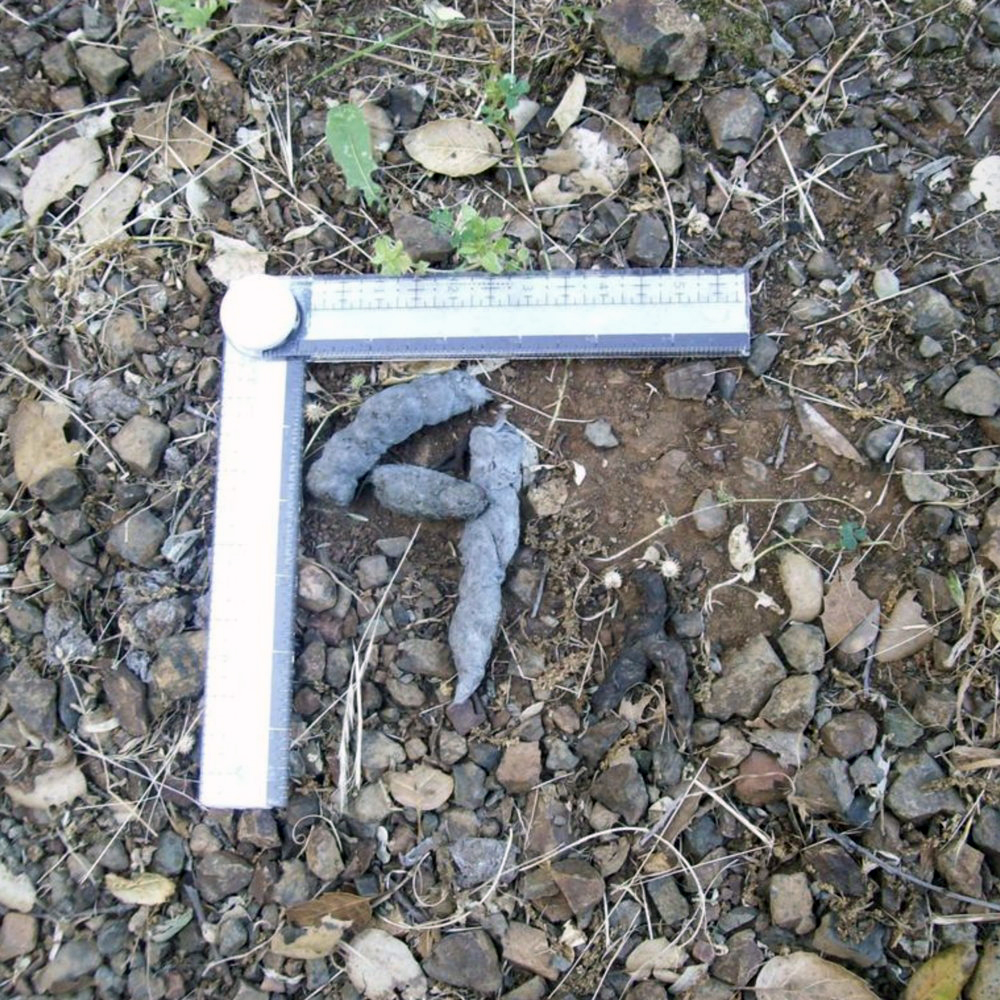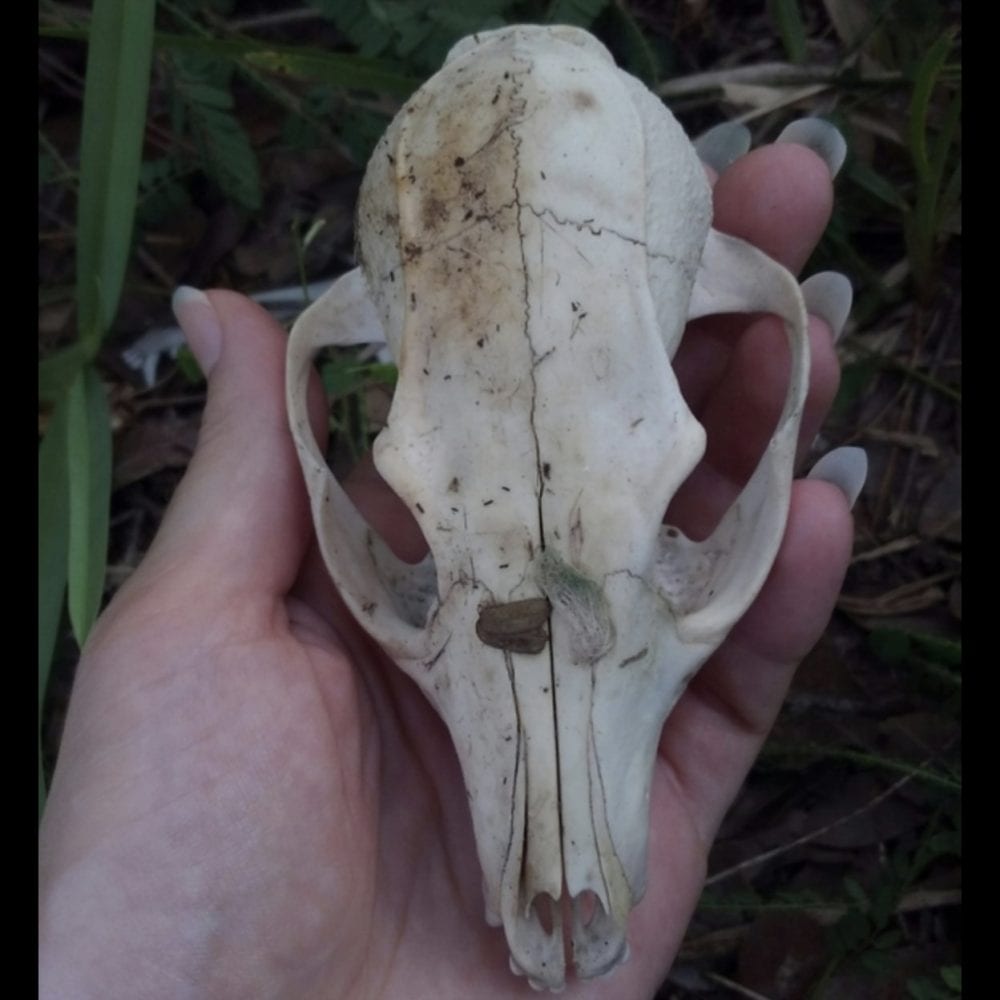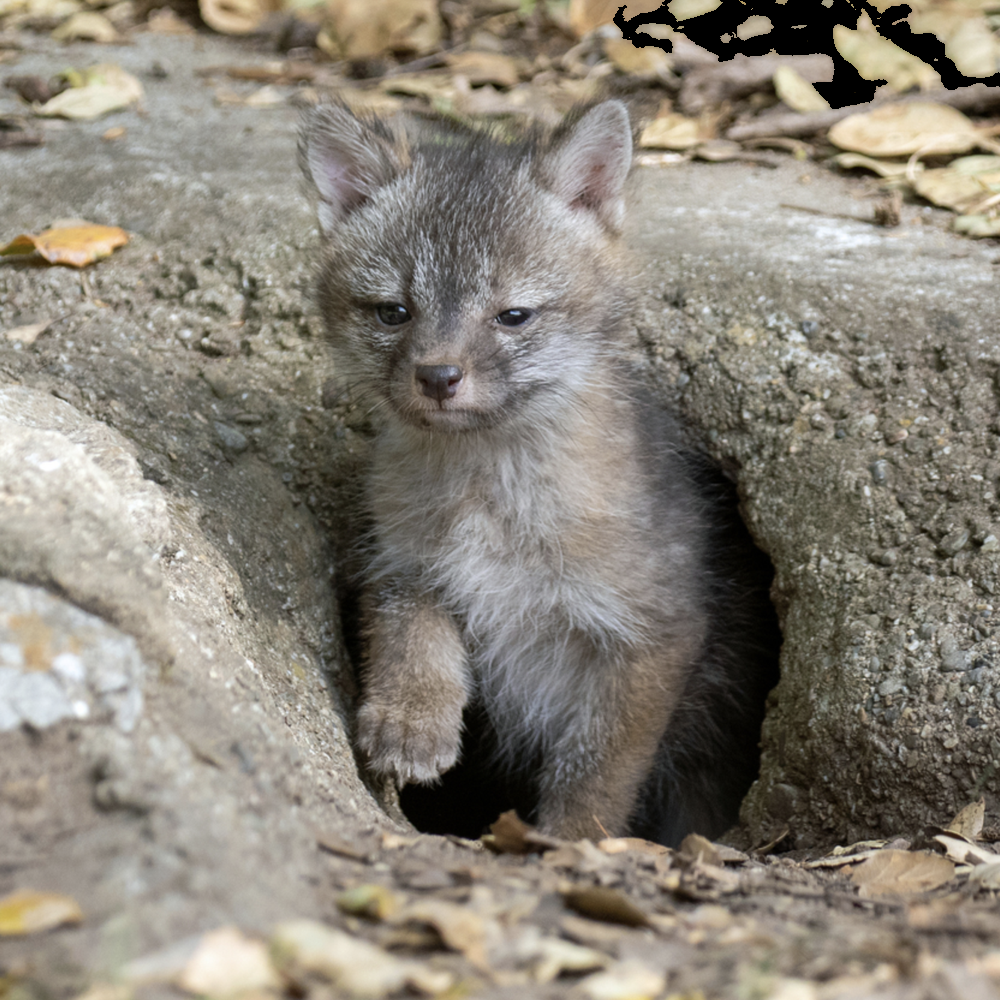Gray Fox
Scientific name: Urocyon cinereoargenteus
Type: Mammal
Family: Canidae (Dog)
Size: 29.9 to 44.3 inches, including the tail
Weight: 8 to 15 pounds
Life Span: 6 to 8 years
Physical Description
Gray foxes have long bodies, relatively short legs, and coarse, salt and pepper gray fur on the face and back. Their legs and chest are reddish while the throat, mid-belly, and inside of legs is white. Gray foxes have long bushy tails with a black tip and a black strip along the top. There are also black marking on the head, nose, and muzzle. Males are slightly larger than females.
Range and Habitat
Gray foxes are found from from southern Canada to as far south as Venezuela and Columbia with the exception of the plains area and northwest section of the US.
The gray fox prefers deciduous forests and scrubby woodlands but also inhabits mixed forests and forest-farmland edges as well.
Diet
The gray fox is an opportunist, consuming whatever is abundant at the time. They eat small to medium-sized mammals such as rabbits, mice, and voles, birds and their eggs, large seeds and nuts, fruits, insects like grasshoppers and crickets, reptiles, and amphibians.
Behavior and Social Life
The gray fox most often hunts at night starting at dusk. However, it may hunt during the day as well. It is active throughout the year. Gray foxes can climb up into trees to search for prey, escape danger, and rest. Their powerful back legs, rotating wrists, and front claws aid in getting up into the canopy.
Dens, which are typically only used only during the mating season and when raising young, are usually found in rocky crevices, caves, hollow logs and up in trees. Sometimes, a fox will enlarge an existing abandoned burrow.
The gray fox communicate using vocal, chemical, tactile, and visual signals. They make sharp barks or yips, growls, squeals, other vocalizations. They use musk secretions to aid in the recognitions of individuals and mark their home range with urine and feces to advertise both ownership and sexual status. Gray foxes will groom each other under certain circumstances and have ritualized postures to designate aggression and submissiveness.
Life Cycle
Mating season is between January and April. Gray foxes are monogamous and potentially maintain permanent pair bonds even though adults are solitary except during breeding and raising young.
About two months after mating, the female will birth. A litter can range from one to seven pups (average of four). The male will help to take care of the young. They are usually weaned at about three months of age and are able to hunt on their own are about four months. They will leave their parents soon thereafter.
Ecological Role
Gray foxes play a small but important multiple ecological roles. They help to keep the small rodent populations in check and serve as host to a number of parasitic insects and worms.
The gray fox has few natural predators. Bobcats, coyotes, and large raptors mainly prey upon young gray foxes.
Interactions With Humans
Gray foxes are considered a problem for attacking and killing poultry. In contrast, they may help the farmer by controlling the populations of certain agricultural pests such as rodents and rabbits.
Gray foxes have long been hunted for their fur, although their pelts are not as valued as that from other animals. In addition, they can carry diseases that like rabies that are a potential health threat to humans and domestic dogs.
Interesting Facts
- Gray foxes are also known as the common gray fox, the maned fox, and the tree fox.
- A group of foxes is called a skulk or a leash.
- Foxes are able to hear rodents digging underground.
- Male foxes are known as dogs, females as vixens, and babies as kits.
- A gray fox will cache food to eat later.
- The musk glands of the gray fox are the largest of any American canid.
- Foxes can run up to 30 to 40 miles per hour.
- Home ranges are about 0.5 to 2 square miles.
- Foxes have whiskers to help them navigate on both their legs and face.
- Gray foxes can semi-retract their claws.
- The gray fox is the only American canid that can climb a tree.
- Gray foxes have been seen climbing up saguaros.
- The gray fox is will sometimes rest on a high branch or in the crotch of a tree.
- Gray foxes can have trouble getting down getting down from a tree and if backing down does not work they may need to jump.


